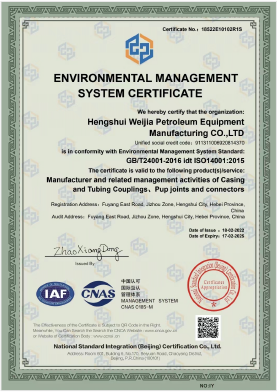- Afrikaans
- Albanian
- Amharic
- Arabic
- Armenian
- Azerbaijani
- Basque
- Belarusian
- Bengali
- Bosnian
- Bulgarian
- Catalan
- Cebuano
- Corsican
- Croatian
- Czech
- Danish
- Dutch
- English
- Esperanto
- Estonian
- Finnish
- French
- Frisian
- Galician
- Georgian
- German
- Greek
- Gujarati
- Haitian Creole
- hausa
- hawaiian
- Hebrew
- Hindi
- Miao
- Hungarian
- Icelandic
- igbo
- Indonesian
- irish
- Italian
- Japanese
- Javanese
- Kannada
- kazakh
- Khmer
- Rwandese
- Korean
- Kurdish
- Kyrgyz
- Lao
- Latin
- Latvian
- Lithuanian
- Luxembourgish
- Macedonian
- Malgashi
- Malay
- Malayalam
- Maltese
- Maori
- Marathi
- Mongolian
- Myanmar
- Nepali
- Norwegian
- Norwegian
- Occitan
- Pashto
- Persian
- Polish
- Portuguese
- Punjabi
- Romanian
- Russian
- Samoan
- Scottish Gaelic
- Serbian
- Sesotho
- Shona
- Sindhi
- Sinhala
- Slovak
- Slovenian
- Somali
- Spanish
- Sundanese
- Swahili
- Swedish
- Tagalog
- Tajik
- Tamil
- Tatar
- Telugu
- Thai
- Turkish
- Turkmen
- Ukrainian
- Urdu
- Uighur
- Uzbek
- Vietnamese
- Welsh
- Bantu
- Yiddish
- Yoruba
- Zulu
Connecting Irrigation Pipes Effectively with High-Quality Couplings for Efficient Water Distribution
Understanding Irrigation Pipe Couplings A Guide to Efficient Agriculture
In the realm of agriculture, efficient water management is a critical factor for cultivating healthy crops and sustaining yields. One of the essential components for efficient irrigation systems is the irrigation pipe coupling. This simple yet vital piece of equipment plays a significant role in connecting irrigation pipes, ensuring that water flows smoothly from the source to the fields.
What Are Irrigation Pipe Couplings?
Irrigation pipe couplings are mechanical devices designed to join two sections of pipe together. They come in various materials, such as plastic, metal, and rubber, allowing compatibility with different irrigation systems, including drip, sprinkler, and surface irrigation. The choice of material often depends on the specific requirements of the agricultural setup, including factors like durability, flexibility, and resistance to chemicals.
Types of Irrigation Pipe Couplings
1. Slip Couplings These couplings are typically used to join two pipes of the same diameter. They are easy to install and often used in straightforward irrigation setups. By simply sliding the coupling over the ends of the pipes, farmers can create a secure connection that allows for the efficient transport of water.
2. Mechanical Couplings Designed for more complex systems, mechanical couplings can accommodate pipes of varying sizes and materials. They often involve the use of clamps or screws to secure the connection and ensure leak-free performance. These couplings are crucial for systems that require frequent adjustments or modifications.
3. Compression Couplings Ideal for connecting pipes in tight spaces or irregular configurations, compression couplings utilize a threaded nut and sealing ring to create a watertight seal. This type of coupling is especially handy in landscaping and garden irrigation systems.
irrigation pipe coupling

4. Threaded Couplings Primarily used with metallic pipes, threaded couplings feature male and female ends that screw into each other. They provide a strong connection and are commonly found in commercial irrigation systems where high pressure is involved.
Benefits of Using Quality Irrigation Pipe Couplings
1. Leak Prevention Poorly designed or damaged couplings can lead to leaks, wasting precious water resources. By investing in quality couplings, farmers can minimize water loss and ensure optimal efficiency in their irrigation systems.
2. Ease of Maintenance High-quality couplings allow for easy disassembly and reassembly, making it simpler to perform maintenance checks or repairs. This convenience is particularly beneficial during the growing season when time is of the essence.
3. Adaptability As agricultural practices evolve, so too must the irrigation systems that support them. Quality couplings provide the flexibility needed to adapt to new technologies or changes in farming methods, ensuring that farmers can always achieve their irrigation goals.
4. Cost-Effectiveness While cheaper couplings may seem appealing, their tendency to wear out quickly can lead to increased costs over time due to repairs and replacements. Investing in durable couplings may require a higher initial outlay but ultimately proves to be more economical.
Conclusion
In summary, irrigation pipe couplings are fundamental components that support the integrity and efficiency of agricultural irrigation systems. They facilitate seamless connections between pipes, enabling effective water distribution to crops, which in turn promotes healthy growth and maximizes yield. By understanding the different types of couplings and their respective benefits, farmers can make informed choices that enhance their irrigation practices, ultimately contributing to sustainable agriculture. As water scarcity continues to be a pressing concern worldwide, the role of these seemingly simple devices in optimizing water usage cannot be underestimated.
-
Tubing Pup Joints: Essential Components for Oil and Gas OperationsNewsJul.10,2025
-
Pup Joints: Essential Components for Reliable Drilling OperationsNewsJul.10,2025
-
Pipe Couplings: Connecting Your World EfficientlyNewsJul.10,2025
-
Mastering Oilfield Operations with Quality Tubing and CasingNewsJul.10,2025
-
High-Quality Casing Couplings for Every NeedNewsJul.10,2025
-
Boost Your Drilling Efficiency with Premium Crossover Tools & Seating NipplesNewsJul.10,2025







